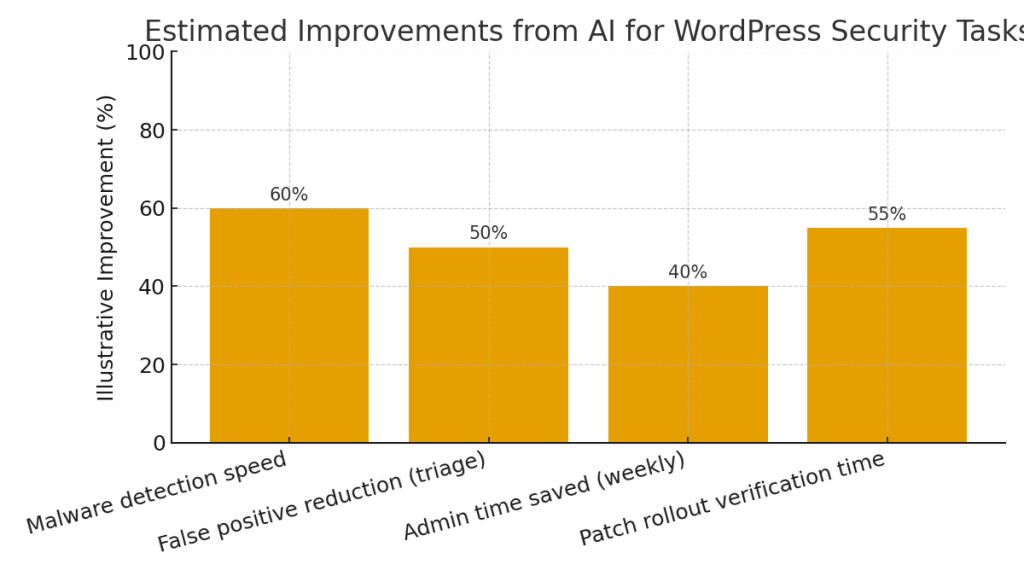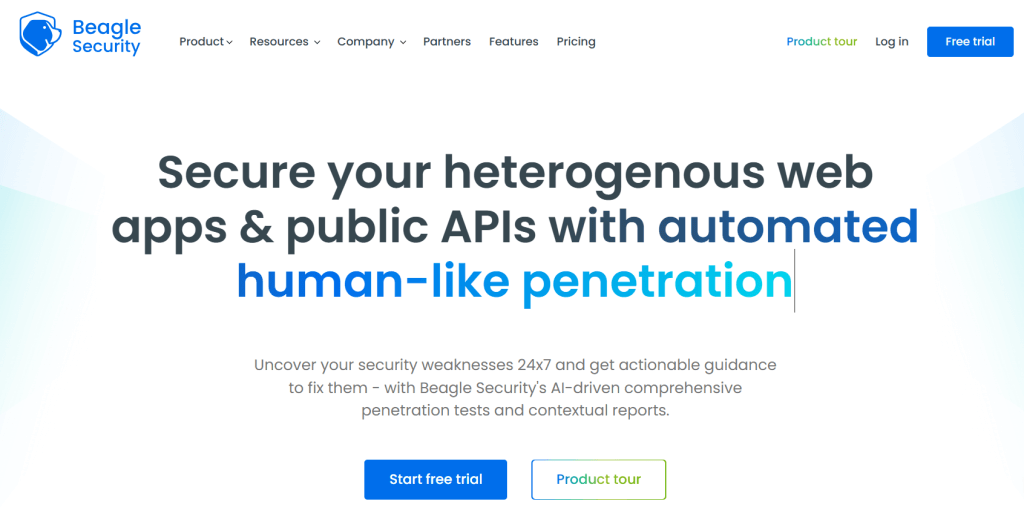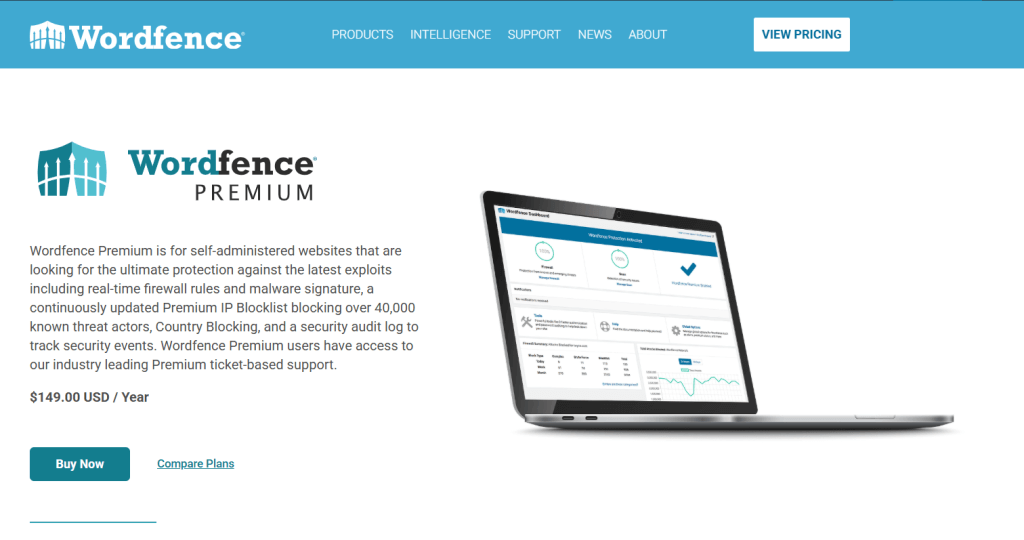
More than 40% of websites are still powered by WordPress; hence, it is not only a digital pillar but also a prime target of any cyberattack. By 2026, advances in WordPress security will already be a board-level issue, rather than a technical maintenance issue. The attackers are also using automation, AI, and zero-day exploits to compromise unprotected sites quickly than traditional defenses can respond. The first line of plugin-based defense, which was used as a means of protection, has been rendered ineffective in providing security on the enterprise level.
AI-driven protection is the next step in WordPress website security for businesses worldwide. Integrating AI into your security design will allow organizations to shift the focus from reactive patching to predictive protection. This helps to identify any anomalies, anticipate threats, and automatically eliminate them before they propagate. Not only does this evolution assure security for your WordPress ecosystem, but it also ensures business continuity, data privacy, and brand integrity.
There must be a change of mindset to secure your WordPress website by not adding more plugins but focusing on orchestrating smarter protection. Combining WordPress protection with dynamic behavioral models and automated response mechanisms will make your online presence robust regardless of the ever-evolving threats.
- Current Challenges in WordPress Security
- The Role of AI in WordPress Security
- Major AI Security Techniques for WordPress in 2026
- Integration of AI with Existing WordPress Security Tools
- Top AI-Powered WordPress Security Tools
- Future Trends in WordPress Security
- Concluding Thoughts
- Frequently Asked Questions
Current Challenges in WordPress Security
To ensure the security of your WordPress environment in 2026, it is necessary to analyze the changes that have evolved the threat environment.
As recently reported by WPScan, out of the 50,882 known WordPress security vulnerabilities:
- 95% are from WordPress plugins
- 2% are from the WordPress core
- 4% are from WordPress themes
The challenges that follow are indicative of the need to develop smarter, adaptive protection models:
1. Outdated Plugins and Themes
Unpatched, abandoned themes and plugins are sources of many WordPress vulnerabilities. Even when the core platform is secure, these components can create backdoors that attackers exploit.
2. Weak Password and Human Errors
Even the smallest mistake, such as a weak password or limited multi-factor authentication, may compromise the entire environment. The most vulnerable point of WordPress website security is human behavior.
3. Supply Chain Risks and Malware Injections
With the help of open source themes, public update channels, and the huge plugin repositories, attackers easily deliver the malware payloads. In the absence of an appropriate WordPress malware protection, the compromised code is transmitted to several sites sharing the same resources.
4. Limitations of Plugin-based Protection
Relying blindly on traditional security plugins means playing catch-up. These tools are great for routine checks and WordPress security monitoring, but they can’t detect advanced attack patterns or intelligently predict evolving threats.
The Role of AI in WordPress Security
AI is a new era in the security of digital spaces and the web landscape. In the case of WordPress cybersecurity, AI presents the capability to detect, anticipate, and eliminate threats way before they occur.
1. Detecting Unusual Patterns
AI constantly examines traffic, modifications in files, and user actions in order to detect anomalies. If it detects unusual access patterns or changes in files, it issues an alarm in real-time, much earlier than harm can be detected.
2. Determining Attacks in Advance
Predictive threat modeling enables AI to analyze the attack history, the trend of plugin versions, and configuration vulnerabilities to uncover the next wave of threats.
3. Automatic Response and Real-time Alerting
AI not only identifies a problem, but it can also generate a response in advance, like isolating a compromised plugin or restoring the site to a clean backup. This minimizes the downtime and recovery expenses.
Major AI Security Techniques for WordPress in 2026
Modern AI platforms integrate different methods, guaranteeing a secure process of hardening the WordPress site.
1. Behavioral Analysis for Anomaly Detection
AI models track all the activities in a site, such as times of logins, location, and installations of various plugins, to determine any suspicious activities that might have been initiated by intruders.
2. Predictive Threat Modeling
Machine learning systems evaluate the vulnerability of each component in real-time, assigning a score on the level of risk to that component, based on the exposures and past attack information.
3. Automated Response Systems
Detection of Malicious code can be blocked in real-time, while the AI can deactivate code or even lock down the credentials compromised by malicious code. Moreover, revert it to a safe service without human intervention.
4. Machine learning-based Malware Detection
ML models identify the behavioral patterns of malware, including those that are new and previously unknown, unlike signature-based scanners. This approach contributes to WordPress’s malware removal abilities on a grand scale.
Together, these techniques make WordPress security services more proactive, context-aware, and adaptable than ever.
Read more: How to maximize WordPress Website ROI.
Integration of AI with Existing WordPress Security Tools
The true strength of modern WordPress security services lies not in replacing existing tools but in intelligently integrating AI across your protection layers. AI doesn’t just add another layer; it becomes the central intelligence that connects every component in your WordPress website security stack.
1. Security Plugins and Web Application Firewalls (WAFs)
Traditional security plugins and WAFs are still used as the initial control measure against exploits like SQL injections, brute-force attacks, and cross-site scripting. With the introduction of AI in these systems, the process of detection becomes behavioral learning focused rather than rule-based scanning.
2. Backups and Recovery Systems
The backup tools have been a key part of the WordPress protection, which is now being turned into a proactive defense by AI. An AI system can check the integrity of backup, identify threats in the stored files, and even simulate a scenario of restoration to ensure that the business is not impacted.
3. Patch and Update Management
One of the best defenses against the known vulnerabilities is to maintain the WordPress core, themes, and plugins. AI boosts the process by constantly scanning version data, testing the exposure levels, and prioritizing updates based on the real-time threat intelligence.
4. Incident Detection and Response Processes
Incorporating AI in your incident response process will turn it into a proactive one rather than a reactive one. Once AI detects a breach or suspicious user behavior, it launches containment processes to isolate infected files, credentials reset, or perform MFA requests.
5. Managed WordPress Security Services
In the case of enterprises that use managed WordPress security services, AI implementation creates scalability and accuracy that humans can’t achieve. Managers can install centralized AIs to oversee several client locations in real-time, and with shared intelligence, an attack can be foreseen and prevented.
Top AI-Powered WordPress Security Tools
To fully leverage modern AI-powered security tools, businesses should hire WordPress experts who can configure and integrate them seamlessly. Expert implementation ensures your WordPress website security is proactive, adaptive, and aligned with evolving cyber threats.
1. WPFort AI
WPFort AI positions itself as a next-gen one-click security solution for a WordPress vulnerability checker. After activation, its “AI Sentinel” will continuously scan, detect, and self-remediate attacks on your WordPress site.
Launch Year: 2025
Pricing Model: Offers a free plan; pro plan starts at $16.58/month
Key capabilities:
- AI-trained firewall rules that evolve (versus only static rule sets)
- Deep malware scanning (“Magic Malware Cleaner”) that probes hidden directories, backdoors, and plugin/theme irregularities.
- Automated backup & rollback of core WordPress files, permissions, and versions to ensure integrity and fast recovery.
2. Beagle Security
Beagle security is an AI-based penetration-testing and vulnerability-assessment tool specifically created for WordPress websites (or any other web applications). Instead of simply scanning the known problems in the plugin, it mimics the actions of the attacker in a bid to discover logic vulnerabilities.
Launch Year: 2020
Pricing Model: Starts at $359/month; free trial available.
Key capabilities:
- An AI core that “thinks like a hacker” and finds vulnerabilities beyond simple signature-matching.
- Authenticated scans (i.e., login-level access) for WordPress that can inspect deeper into plugin/theme interactions.
- Continuous monitoring and vulnerability database updates that feed the AI engine for evolving threats.
3. Quttera
Quttera uses the heuristic and AI-powered scanning method of WordPress security checks to identify malware, backdoors, suspicious code, hidden files, and blacklisting status. Its engine examines code behavior, obfuscation, and unknown threats; unlike signature-based scanners, which only examine code signatures.
Launch Year: 2014
Pricing Model: Free version available; premium plans start at $20/month.
Key capabilities:
- Internal (server-side) scan of PHP/JS files, theme/plugin files for abnormal behavior or code injection.
- External (client-side) scan simulating browser visits to detect hidden iframes, malicious redirects, obfuscated JavaScript, and drive-by download attempts.
- AI-powered heuristics that adapt over time (rather than just relying on known malware signatures).
4. WP Safe Zone
WP Safe Zone is designed as an AI-powered security plugin built specifically for WordPress sites seeking easy setup combined with advanced protection. It focuses on behavioral analysis of users, system logs, risk-scoring environment, and proactive threat prevention.
Launch Year: 2025
Pricing Model: Free version available; premium plans start at $69/year
Key capabilities:
- AI monitors login patterns, plugin/theme install behavior, and access changes to detect abnormal or suspicious activity.
- The system assesses vulnerabilities, configuration drift, and threat intelligence feeds in real-time.
- Seamless WordPress integration: plugin built for the WordPress context, minimal setup required, designed to work inside standard WP installs.
5. Wordfence Security
Wordfence is a well-known WordPress security plugin; its newer iterations integrate machine learning and AI-based threat detection modules. It’s a good choice for organizations already familiar with the WordPress landscape, wanting to upgrade their WordPress security services stack into more advanced territory.
Launch Year: 2011
Pricing Model: Free version available; premium plans start at $149 per year.
Key capabilities:
- An AI-powered endpoint firewall that analyses incoming traffic, user agents, and request patterns to identify malicious bots.
- Heuristic malware scanner that goes beyond known signatures to catch zero-day threats or code anomalies.
- Threat intelligence sharing across the Wordfence network, accelerating the learning curve of the ML models.
Future Trends in WordPress Security
As WordPress continues to evolve, the security landscape is also becoming more complex and sophisticated. Businesses leveraging WordPress development services must anticipate the emerging threats mentioned below.
1. Autonomous AI Agents
The AI agents will constantly scan WordPress sites, identify and eliminate threats immediately. These agents ensure that the protection of WordPress is active and responsive to modifications and minimizes the need for human intervention.
2. Vulnerability Predictive Analytics
AI will utilize past data, the trend of the plugin, and the global threat information to predict zero-day exploits. The predictive method will enable the site owners to secure their WordPress sites before attacks and reduce the exposure of their sites to new attacks.
3. AI Security Services on the Cloud
Cloud AI systems will use data from many locations, which will offer central threat intelligence, automated monitoring, and adaptive protection. These services augment WordPress security services, offering scalability and real-time updates without complicated in-house management.
4. DevSecOps Integration
The development lifecycle will have security embedded into it. CI/CD pipelines will use AI-checked code to ensure that the validation of plugins, themes, and custom code is done before deployment. This guarantees that the hardening of WordPress is a continuous and best practice-oriented process.
5. Behavioral Access Analytics
AI will examine user behavior and detect suspicious, compromised, or insider threats. Enterprises can enhance WordPress cybersecurity through the administration of role-based access controls and adaptive security without disrupting work processes.
Concluding Thoughts
The cyber threats have advanced, demanding a shift from classic forms of plugin solutions to AI intelligence. In 2026, it will no longer be possible to secure a WordPress site based on reactive patching. Active monitoring, predictive threat identification, and automated response frameworks will be the way to mitigate the emerging vulnerabilities.
Through the incorporation of AI-driven WordPress security, businesses can secure their online resources, retain customer confidence, and ensure business continuity even in the face of sophisticated attacks. For organizations looking to implement these advanced measures effectively, it is crucial to hire WordPress developers with expertise in AI-enhanced security solutions. These professionals can design, configure, and maintain a robust security framework that not only protects your site but also aligns with enterprise-level compliance and operational goals.
Frequently Asked Questions
1. What are the common WordPress security vulnerabilities?
Common vulnerabilities include outdated plugins and themes, weak passwords, brute-force attacks, SQL injections, cross-site scripting (XSS), and misconfigured server settings.
2. How to secure your WordPress website from hackers?
Keep WordPress core, themes, and plugins updated, enforce strong passwords and MFA, use security plugins, regularly back up your site, and monitor for suspicious activity.
3. How to protect WordPress from malware attacks?
Implement AI-powered malware detection, scan files regularly, remove infected plugins/themes, enforce firewalls, and use WordPress malware removal services when needed.
4. How is AI transforming WordPress security?
AI enables predictive threat detection, behavioral analysis, real-time monitoring, and automated responses, moving security from reactive to proactive.
5. Can AI prevent WordPress hacking attempts?
Yes, AI can detect suspicious patterns, block malicious activity in real time, and predict potential vulnerabilities before they are exploited.
6. What are the benefits of using AI for WordPress security?
AI enhances threat detection accuracy, reduces manual monitoring, prevents zero-day attacks, automates responses, and strengthens overall WordPress website security.








